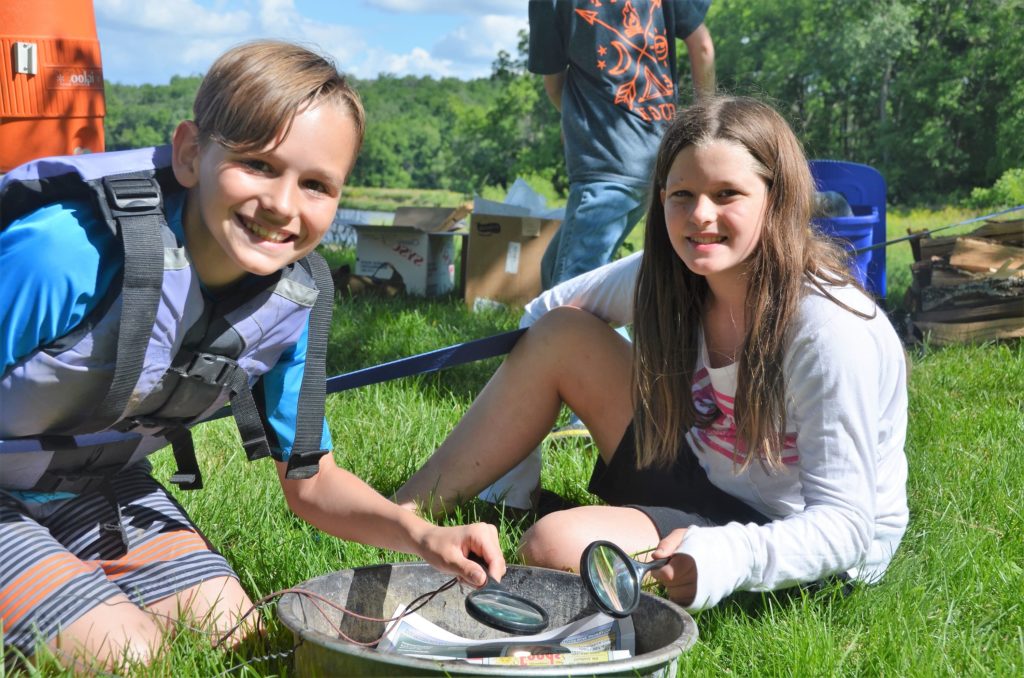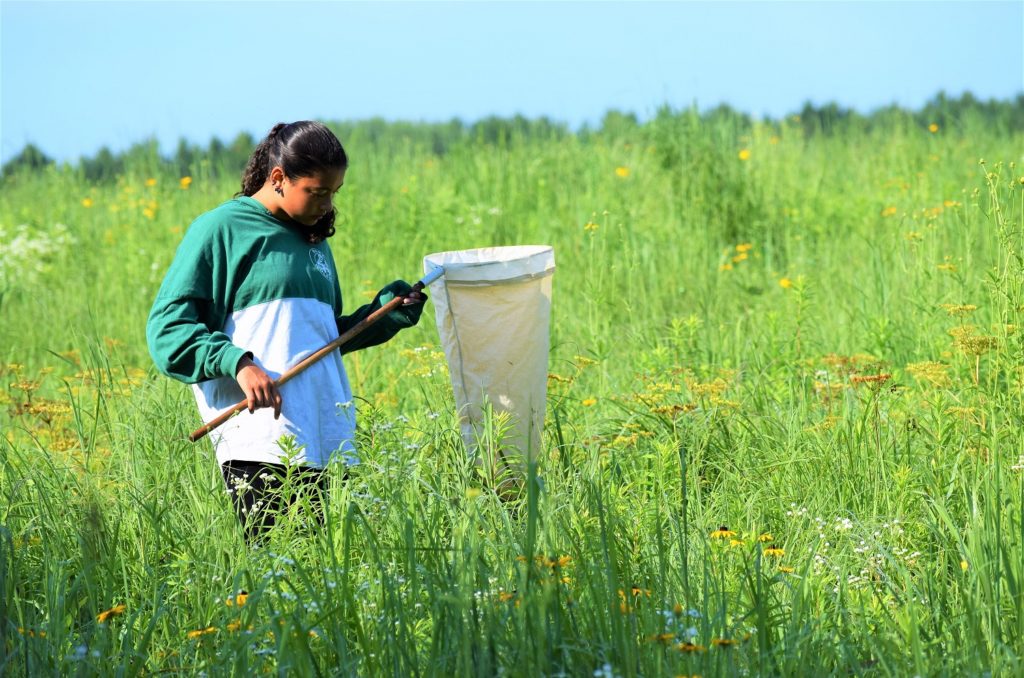Engage Directly with Nature
Most kids have few opportunities to explore nature and don’t know how to be in nature without becoming bored. If taught how to interact with and explore the natural world (not just about it), students leave excited to seek out time in nature. If students develop tools for directly engaging with nature then instructors can step aside, guiding only as necessary.
Direct observation of organisms and phenomena can be a transformative experience, and one that is not often accessible in classrooms. When students look closely at a part of the natural world–like a leaf or a salamander–then ask questions or form explanations from their observations, they fall a little in love with it. They cultivate a relationship with and deeper understanding of the natural world. These experiences are essential building blocks of environmental literacy.
Think Like a Scientist
When students make careful observations, ask questions, attempt to explain mysteries in nature, and understand the importance of evidence, their wonder and curiosity explodes. An emphasis on developing scientific habits of mind and reasoning skills helps students do science, leads them to better understand science, helps them become critical consumers of information, and deepens their relationship to the natural world. When instructors model science language and students use it to share observations and ideas, students build academic language and disciplinary literacy.


Learn Through Discussions
Much learning takes place when students make sense of experiences by putting their ideas into words and comparing their ideas to those of others. To be effective, educational experiences need to be full of intentional opportunities for student dialogue. When students engage in discussions that build on prior knowledge, encourage divergent thinking, and challenge the strength of their evidence, they actively deepen their understanding of complex ideas.
In discussion, students practice clarifying their thinking, communicating ideas effectively, and asking productive questions. They learn to think critically and creatively. Discussion validates students’ contributions to their own learning. To an instructor, student-talk can be a window into students’ brains, providing a view of their prior knowledge and current understanding. Instructors who lead productive discussions use broad questions, cultivate a safe space for sharing ideas, focus on interesting topics, and respond non-judgmentally to students’ ideas. Most of all, they’re genuinely interested in how students are putting ideas together to make sense of their experiences.
Experience the Learning Cycle Model
The learning cycle is an effective, flexible, transformative, and widely used model for designing instruction that’s based on how people learn. It can be used to improve any lesson or program. This practical and memorable model helps instructors design educational experiences consistent with what we know about how people learn. The learning cycle includes five phases: invitation, exploration, concept invention, application, and reflection.
Eagle Bluff’s methodologies are based on those researched and trained through The BEETLES Project.
BEETLES is one of many programs at the Lawrence Hall of Science (the Hall), a public science center created in 1968 as part of the University of California at Berkeley. The mission of the Hall is to inspire and foster learning of science and mathematics for all, especially those who have limited access to science. The Hall is a science education “think tank” that specializes in taking the latest research in science education and translating it into practical and well-tested materials for educators.
Interested in Learning More About an Eagle Bluff Trip?
Fill out our inquiry form and our groups manager will get back to you with more information!


